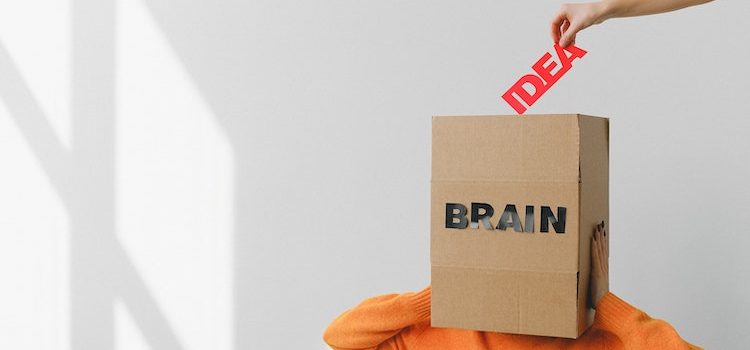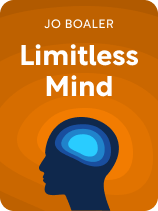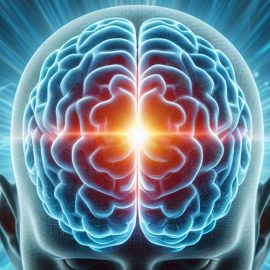

This article is an excerpt from the Shortform book guide to "Limitless Mind" by Jo Boaler. Shortform has the world's best summaries and analyses of books you should be reading.
Like this article? Sign up for a free trial here.
How do people learn? What’s encouraging about the latest science?
Neuroscientists have discovered that the brain has much more capacity for development than was believed in the past and that many of the ideas on which the traditional education paradigm is based are flat-out wrong. Math educator Jo Boaler shares some research that gives us all hope.
Keep reading to discover what we now know about how people learn.
How People Learn
Before delving into improving how people learn, it’s important to understand how the brain incorporates new skills and information in the first place. So, how do people learn? Our new understanding of the brain’s neuroplasticity reveals that struggling with problems and ideas is beneficial, quick thinking is unimportant, and true learning takes place when different regions of the brain interact.
Boaler explains that scientists and educators have long believed that a person’s mental capacity is a fixed quantity that is set in stone early in life and certainly by adulthood. Because of this, our educational system has classified students into high, medium, and low achievers, and teaches them (or neglects to teach them) based on their perceived ability. Not only is this premise fundamentally flawed, but it also does a disservice to every student.
(Shortform note: Boaler frequently cites the work of psychologist Carol S. Dweck, author of Mindset, on the limiting effect of believing that your mental potential is set at birth. However, the question of whether that’s true can also be seen as the latest chapter in the “nature vs. nurture” debate first described in those terms by polymath Francis Galton in 1869. Galton supported the idea that intelligence is the product of heredity and not determined by social or individual factors, a view that drives traditional teaching practices.)
Instead, we now understand that the human brain is constantly forming, rearranging, and discarding neural pathways to incorporate new information and skills. As a result, your brain never stops changing, and the belief that you have a built-in aptitude for certain skills or a set level of intelligence is now considered nonsense. Boaler argues that any time you learn a new idea or practice a skill, your brain forms new neural connections, strengthens them with repeated use, and creates new links between preexisting neural pathways. While it’s true that no two people’s brains are the same and that students may exhibit different levels of development, those differences are inconsequential compared to our shared capacity for growth.
(Shortform note: One neuroscientist can testify to Boaler’s argument that the brain is always capable of learning and forming new connections: Jill Bolte Taylor suffered a stroke in 1996 and had to train her brain to redevelop all her skills, despite the fact that much of her left hemisphere—in particular, the parts governing mathematical thinking and linear logic—were destroyed or severely traumatized. In My Stroke of Insight, Taylor recounts how through the power of neuroplasticity and years of dedicated effort, she was able to form new neural pathways so that the parts of her brain that survived her stroke could relearn and resume all the cognitive functions she’d lost.)
Another thing we now understand is that having a hard time learning something is good for brain development. Most of us grew up being penalized for making mistakes in class and developed the belief that struggling with a subject meant that we “weren’t any good at it.” Boaler says this couldn’t be more wrong because struggling through mistakes is what increases your mental capacity. Brain scans prove that students who spend time correcting their mistakes exhibit more mental activity than students who get the right answers to problems on the first try. Therefore, the students who have to fight through a problem are creating more neural connections than the students who don’t.
(Shortform note: Knowing how students’ brains mature neurologically not only reframes how we approach educational challenges, but it also acts as a guide to the type of work teachers should assign at different developmental stages. For young students, lessons couched within computer games can help them make connections between math and grammar rules and their practical uses. As students enter their teens and seek more independence, assigning self-directed projects that focus on issues that relate to their lives can keep them invested in their learning.)
Boaler uses the idea that challenge is good to highlight a flaw in modern textbooks—they’re purposely designed with quick and simple problems under the assumption that providing students with an “easy win” will encourage them to learn more. Boaler argues that a better approach is to push students with more difficult problems while explaining that making mistakes is not only good but vital to the process of learning. This applies not only to problem-solving but also to questions involving memory. Every time you fight to recall a piece of information, you strengthen the neural connections that make it easier to remember. For this reason, students should be encouraged to test their memory and work through correcting mistakes.
(Shortform note: In a sense, the reasons why schools test students and why students should test themselves are diametrically opposed. Because schools test for evaluation, this sends the message that tests are the end of the learning process and not a crucial part of it. However, in Ultralearning, Scott Young explains that self-testing can improve retention and help students integrate knowledge into their long-term memory. Self-testing also creates opportunities to correct and learn from mistakes in an environment where mistakes won’t be penalized.)
Another thing that happens when you engage in deep learning is that multiple regions of your brain become involved, and when multiple parts of the brain interact—such as your memory, communication, and visual processing centers—your ability to understand and incorporate new information is amplified. Boaler cites research indicating that many people who are considered to be geniuses engage both hemispheres of the brain when solving problems. Examples include great mathematicians who consider themselves to be visual thinkers or musical composers who think in terms of math.
(Shortform note: Even if you’re not a visual thinker, you can boost your learning by stimulating multiple regions of your brain. In Learning How to Learn, Barbara Oakley and Dr. Terrence Sejnowski explain this as a “multisensory approach” to learning. Regardless of your preferred learning style, they argue that, if you see and hear information, your brain will create more neural connections than if you only receive it through one sensory pathway. Connecting knowledge to multiple sensory inputs makes what you learned easier to remember in the future. This idea is backed up by research showing that students who listen to an audiobook while reading learn better than those who merely read visually.)
Learn Slowly, Not Quickly
Research has also debunked another long-held belief that’s contributed greatly to students’ dislike of learning—the idea that intelligence is tied to quick thinking, when in fact the opposite is true. Boaler explains that much like a computer, your brain has two different types of recall: your active memory (what you’re thinking about right now) and long-term memory. Timed tests engage your short-term active memory, but the information stored there is quickly lost and replaced as soon as it isn’t needed. This is why “cramming for a test” doesn’t result in true learning—you’ve simply trained your brain to temporarily store facts, regurgitate them, then clear them from your mind to make room for the next cramming session.

———End of Preview———
Like what you just read? Read the rest of the world's best book summary and analysis of Jo Boaler's "Limitless Mind" at Shortform.
Here's what you'll find in our full Limitless Mind summary:
- Why everything you thought you knew about natural abilities is wrong
- Why attitude is more important than aptitude when it comes to learning
- How to apply the science to boost your learning






